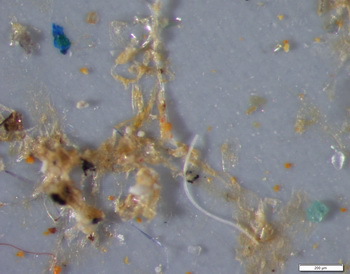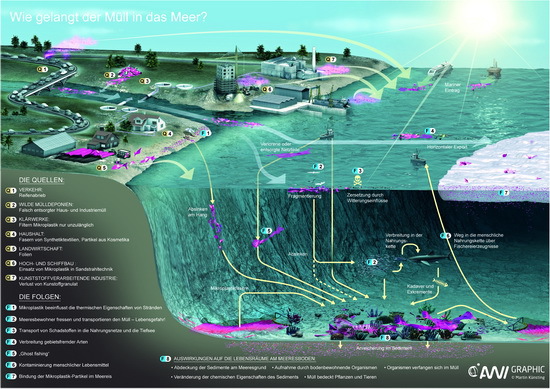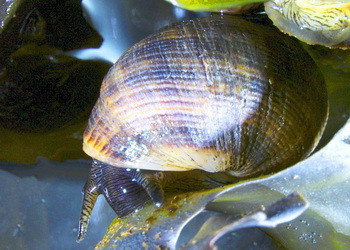Kategorie: News
More animals affected by microplastics than previously thought
 |
Seabirds aren't the only animals that are threatened by the bane of microplastics. In two separate studies, scientists at the Alfred Wegener Institute, Helmholtz Centre for Polar and Marine Research (AWI) have shown that other organisms and plants are also affected.
Discarded plastic materials become weathered down by the elements over time. Through sunlight, ultraviolet rays, wind and waves, it breaks down into smaller fragments. Once these fragments are smaller than five millimetres, they are known as microplastics, which are found in practically every ocean in the world today.
As the scientists at AWI explore the quantity and spread of microplastics in the sea, they come across evidence of their impact on marine life and the ecosystem. Two of their recent studies have identified specific groups of organisms and plants that are affected by microplastics.
Mackerel mistake microplastics as prey
In one of the studies, they examined the stomach contents of 290 mackerel, flounder, herring, cod and righteye flounders taken from the North and Baltic Seas. They discovered that the mackerel consumed more plastics than those fish that spent more time close to the seafloor, like flounder and yellowfin sole. In addition, the mackerel consumed microplastics 13 to 30 percent more of the time, depending on where they had been caught.

Müllkreislauf im Meer © AWI
On the other hand, herring had no microplastics in their system during certain seasons. “The reason for that may have to do with the feeding behaviour of the fish,” said Dr Gunnard Gerdts, AWI biologist and lead author of the study.
Elaborating, Dr Gerdts explained that the mackerel may have mistaken the microplastics floating on the water surface for prey, particularly newly-born pipefish, which are commonly found at the water surface, and are somewhat similar in shape and colour to microplastics.
Currently, little is known about the effects of microplastic consumption in fish. Nevertheless, Dr Gerdts described a cod which had an approximately 50cm rubber band in its stomach. Because it had been unable to spit it out, the fish had starved to death. Could swallowing microplastics also have such serious consequences in fish? According to Dr Gerdts, their own study at least had not shown any indication of this possibility.
Microplastics on seaweed, eaten by sea snails
 |
In the second study, AWI biologist Lars Gutow, together with colleagues, investigated whether herbivores such as the common periwinkle (Littorina littorea) absorbed microplastic particles while foraging. These sea snails live on the rocky coast of Helgoland and eat the bladderwrack seaweed and other plants in the kelp forest.
Gutow said that it was surprising that rocky coasts and the organisms that live there have hardly been studied for microplastics, as it is in such places that the larger plastic pieces are grated into smaller particles.
“Our experiments show that microplastic particles adhere particularly well to the structured and sticky surface of bladderwrack,” said Gutow.
To check on this assumption, the researchers studied seaweed samples and snails taken from the North Sea coast. First, they investigated how much microplastic particles had been deposited on the surface of the bladderwrack. Then, they attached fluorescent plastic fragments to the seaweed and fed the seaweed to the snails.
The results showed that the higher the concentration of microplastics in the water, the more particles were found on the surface of the algae. However, there was no trace of the flourescent particles in the snails' tissues or bloodstream.
According to Gutow, scientists had so far focussed their attention on endangered species, particularly those that burrowed through the seabed or lived in filtered seawater. His research has shown that the range of species affected by microplastics is much larger, covering marine herbivores as well; in addition, the environment and creatures of the rocky coasts need to be taken into account as well.
Information and other backgrounds: www.awi.de/im-fokus/muell-im-meer.html